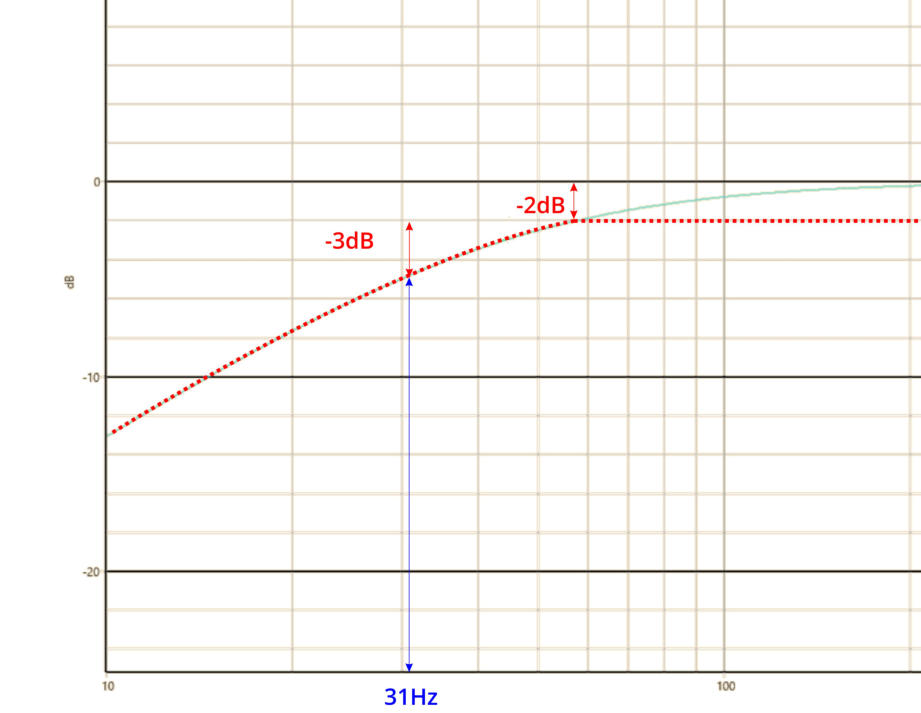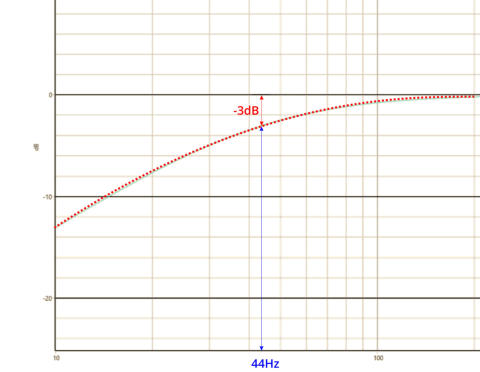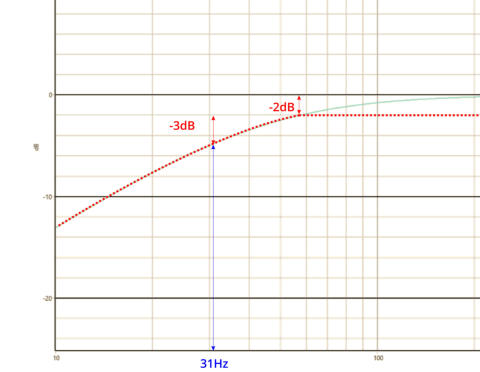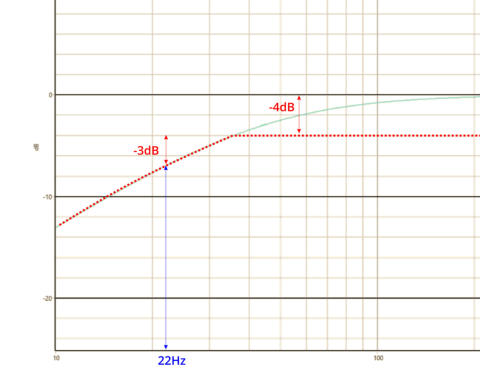


#5 A NEW CONTROL: BANDWIDTH / AMPLITUDE
The standard spec relating bass extension is F3, meaning “At what frequency does the output fall to 3dB below the rest of the
band?”. It means, “Bass half power”. All along, even if you accept a manufacturer’s number, the spec has been squishy because
it’s really dominated by your room. But now, not only is F3 squishy owing to the room, it’s also user adjustable because you can
trade extension for maximum output in the processor.
Any bass system has a performance frontier that, by applying equalization in the processor, we are free to use as we see fit. Let’s
look at the maximum output curve of the critically damped system we worked with in section #4. For simplicity we’ll set the idea
of boost aside; but the principles remain correct. You can see that, run naturally, the original system has an F3 of 44Hz.
Suppose we have plenty of available output, as larger systems typically do. If we reduce maximum output by 2dB, F3 shifts
downward to 31Hz. That is how the amplitude/bandwidth trade off is done. Again, not do-able in conventional audio, but simple
in Next Gen.
Suppose you can give up 4dB of maximum output, say, for a low level listening setting. Now your F3 can lower still more.
A useful feature of the Digital Signal Processor is the independently programmable Presets. You could have all three of these
choices at your fingertips.






#5 A NEW CONTROL: BANDWIDTH / AMPLITUDE
The standard spec relating bass extension is F3,
meaning “At what frequency does the output
fall to 3dB below the rest of the band?”. It
means, “Bass half power”. All along, even if you
accept a manufacturer’s number, the spec has
been squishy because it’s really dominated by
your room. But now, not only is F3 squishy
owing to the room, it’s also user adjustable
because you can trade extension for maximum
output in the processor.
Any bass system has a performance frontier
that, by applying equalization in the processor,
we are free to use as we see fit. Let’s look at the
maximum output curve of the critically damped
system we worked with in section #4. For
simplicity we’ll set the idea of boost aside; but
the principles remain correct. You can see that,
run naturally, the original system has an F3 of
44Hz.
Suppose we have plenty of available output, as
larger systems typically do. If we reduce
maximum output by 2dB, F3 shifts downward
to 31Hz. That is how the amplitude/bandwidth
trade off is done. Again, not do-able in
conventional audio, but simple in Next Gen.
Suppose you can give up 4dB of maximum
output, say, for a low level listening setting. Now
your F3 can lower still more.
A useful feature of the Digital Signal Processor is
the independently programmable Presets. You
could have all three of these choices at your
fingertips.









